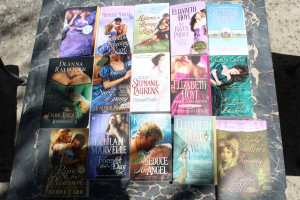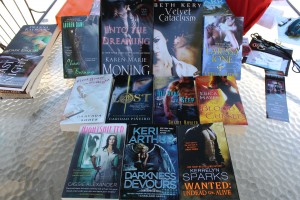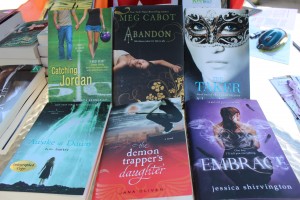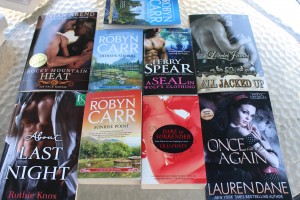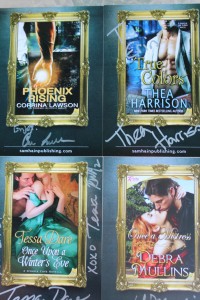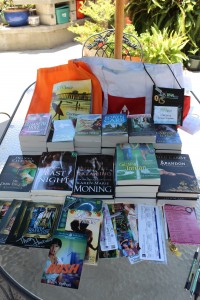 The Romance Writers of America's twelfth annual national conference is over. I'm going to write up and post my notes from the conference over the next couple of weeks, but for a moment let's analyze this excellent pile of loot.
The Romance Writers of America's twelfth annual national conference is over. I'm going to write up and post my notes from the conference over the next couple of weeks, but for a moment let's analyze this excellent pile of loot.
I skipped a couple of the biggest signings to, you know, attend workshops and learn things, so I didn't pick up any free books from Avon or Harlequin. At the signings I did attend, I tried to be selective about grabbing free books, looking especially for new-to-me authors that I've been curious about.
And, yeah, I snatched up books from a few of my auto-buy favorites as well.
So excited to dig into these. I've got Cecilia Grant's A Lady Awakened queued up for the plane trip home, and Tessa Dare's RITA-winning A Night to Surrender, whose gorgeous prose I cannot praise enough, will be a gift to an aunt who needs a little more HEA in her life right now.
As for The Raven Prince...that one I'm going to put in plastic and hoard. It's an all-time favorite & the signed copy is going to be a look-but-don't-touch item.
Except for Karen Marie Moning and Larissa Ione, both of whom I adore, all of these are new to me authors.
Why do YA books get the best covers? Just look at those. I recently read Remittance Girl's Cover Rage post, and she makes a good point.
A mixed bag of contemporaries - western, erotic, small town - and accidentally mis-sorted a paranormal. Again, all new to me authors.
These digital download cards that Samhain handed out are such an awesome idea. I really prefer to read on my e-reader, whenever possible, I don't have to put these in a box and ship them anywhere, and, on top of it, they're neat keepsakes that I can slot into my commonplace book.
I also collected an assortment of pens, bookmarks, magnets, along with a great big tote-bag from Harlequin and a smaller one from the Beau Monde. On my badge you can see a few commemorative pins & lying across it, the reason why gifts of ballpoint pens are particularly useless where I'm concerned - I was taking notes with my Stipula Vedo, an italic-nibbed, piston-filling fountain pen I kept loaded up with J. Herbin's Poussiere de Lune (that's ink, natch) for the conference.
So concludes the photographic portion of my recap. All in all, I think I came home with about 50 free books. Not bad, right?
